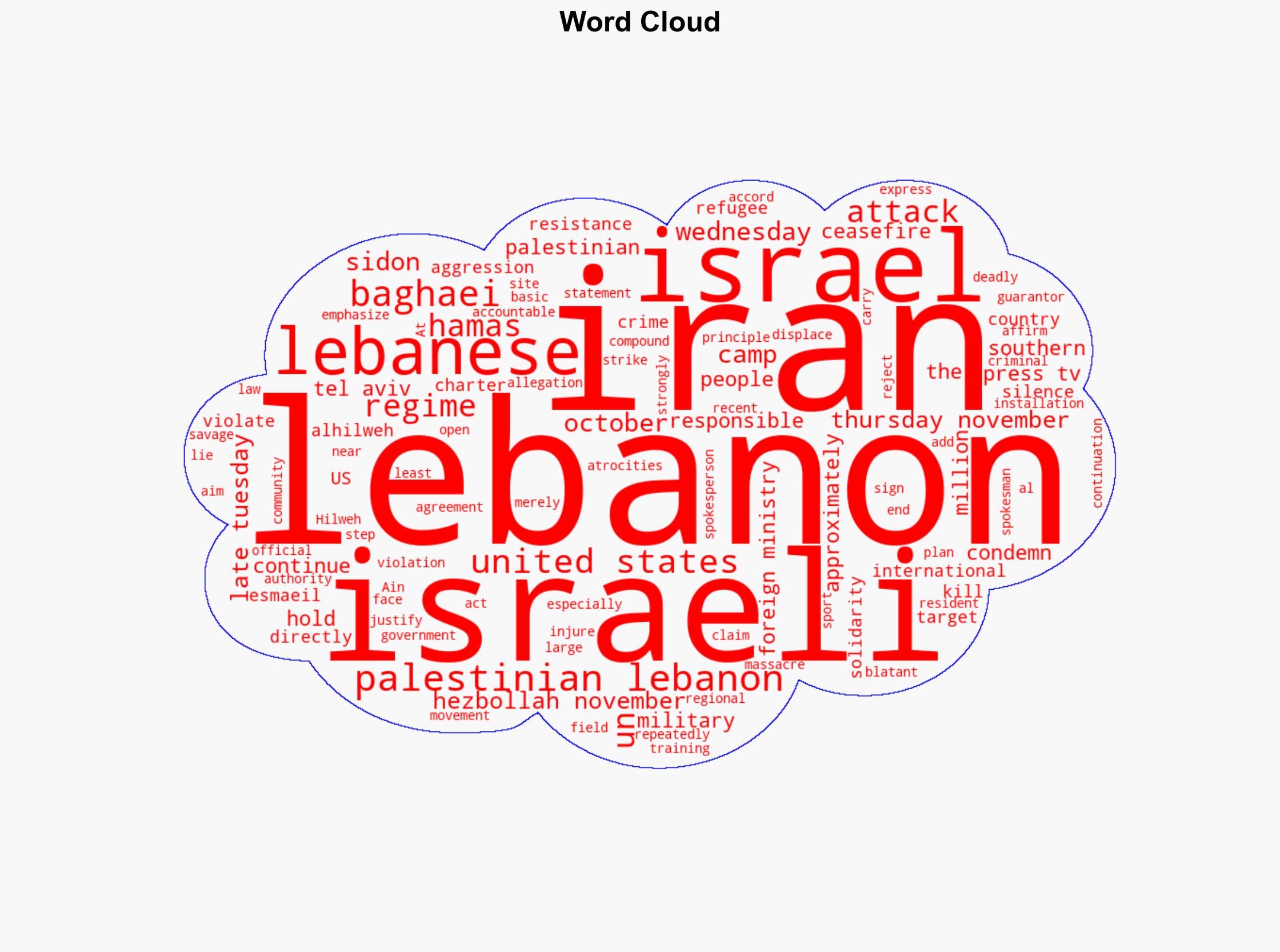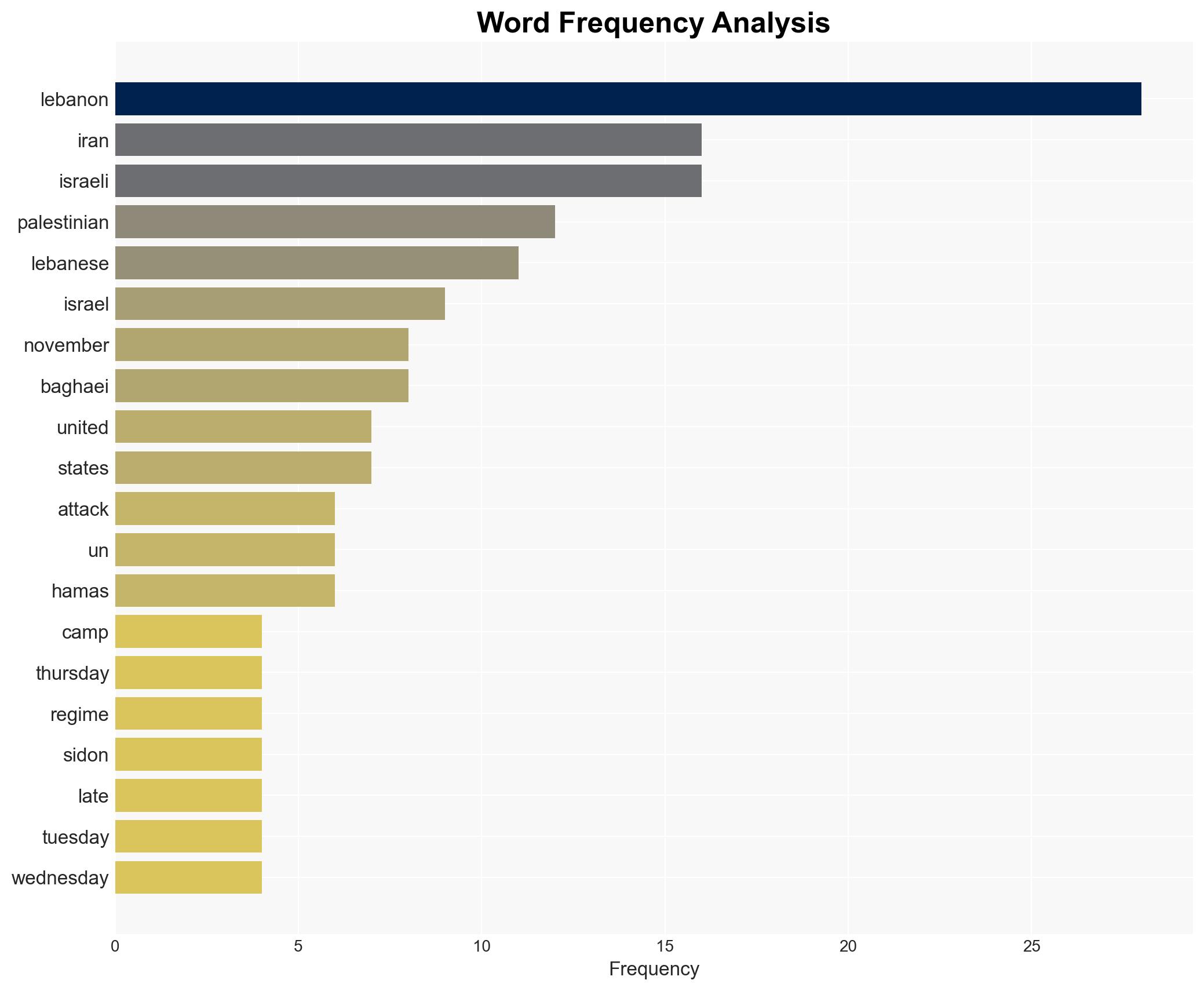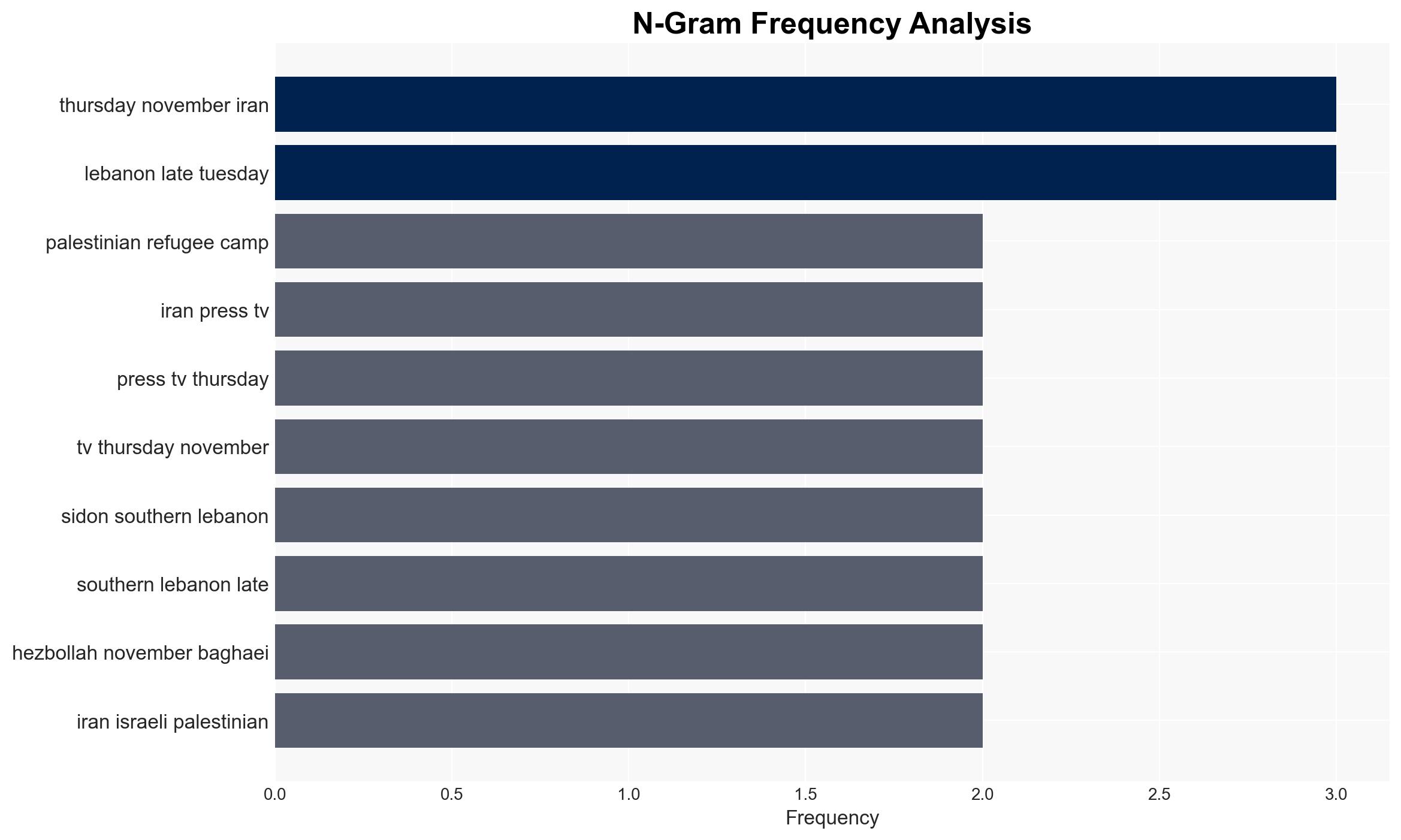Iran condemns Israeli attack on Palestinian refugee camp in Lebanon holds US responsible
Published on: 2025-11-21
AI-powered OSINT brief from verified open sources. Automated NLP signal extraction with human verification. See our Methodology and Why WorldWideWatchers.
Intelligence Report:
1. BLUF (Bottom Line Up Front)
With a moderate confidence level, the most supported hypothesis is that Iran’s condemnation of Israel’s attack on the Palestinian refugee camp in Lebanon and the attribution of responsibility to the US is a strategic move to increase regional influence and rally support among allies. Recommended actions include diplomatic engagement with regional stakeholders to de-escalate tensions and reinforce ceasefire agreements.
2. Competing Hypotheses
Hypothesis 1: Iran’s condemnation and attribution of responsibility to the US is primarily a strategic maneuver to bolster its regional influence and strengthen ties with Hezbollah and other allies by positioning itself as a defender of Palestinian and Lebanese interests.
Hypothesis 2: Iran’s statements are primarily driven by genuine concern for Palestinian and Lebanese civilians and are aimed at pressuring the international community, particularly the US, to take a more active role in curbing Israeli military actions.
Hypothesis 1 is more likely given Iran’s historical pattern of using regional conflicts to enhance its geopolitical standing and influence, particularly through alliances with non-state actors like Hezbollah.
3. Key Assumptions and Red Flags
Assumptions: Iran’s statements are assumed to be part of a broader strategic narrative rather than isolated diplomatic rhetoric. It is assumed that Iran seeks to leverage regional conflicts to its advantage.
Red Flags: Potential bias in Iranian state media reporting, as well as the possibility of exaggeration or misinformation regarding the extent of the attack and its impacts.
Deception Indicators: The claim of targeting a Hamas training compound may be used by Israel to justify military actions, necessitating verification from independent sources.
4. Implications and Strategic Risks
The escalation of rhetoric and military actions could lead to increased regional tensions, potentially drawing in more state and non-state actors. There is a risk of retaliatory actions by Hezbollah or other Iranian-aligned groups, which could destabilize Lebanon further. The situation could also exacerbate US-Iran tensions, complicating diplomatic efforts in the region.
5. Recommendations and Outlook
- Engage diplomatically with regional stakeholders, including Lebanon and Israel, to reinforce ceasefire agreements and prevent further escalation.
- Encourage transparency and independent investigations into the attack to counter misinformation and build trust among involved parties.
- Monitor Hezbollah’s activities closely for signs of mobilization or retaliation.
- Best Case Scenario: Successful diplomatic engagement leads to a reinforced ceasefire and reduced tensions.
- Worst Case Scenario: Retaliatory actions by Hezbollah lead to a broader regional conflict.
- Most Likely Scenario: Continued low-level tensions with sporadic flare-ups, but no major escalation.
6. Key Individuals and Entities
Esmaeil Baghaei – Iran Foreign Ministry Spokesman
Hezbollah – Lebanese Resistance Movement
Hamas – Palestinian Political and Military Organization
7. Thematic Tags
Structured Analytic Techniques Applied
- ACH 2.0: Reconstruct likely threat actor intentions via hypothesis testing and structured refutation.
- Indicators Development: Track radicalization signals and propaganda patterns to anticipate operational planning.
- Narrative Pattern Analysis: Analyze spread/adaptation of ideological narratives for recruitment/incitement signals.
Explore more:
Counter-Terrorism Briefs ·
Daily Summary ·
Support us





